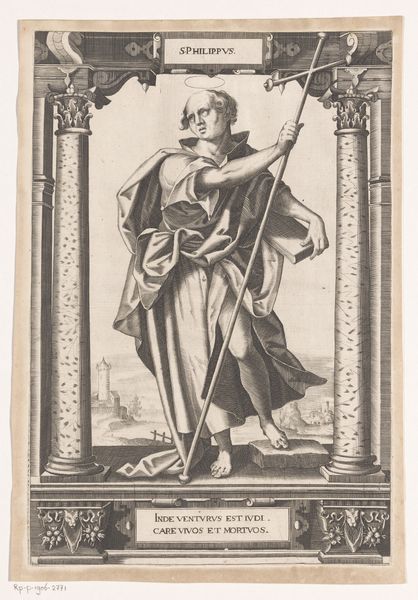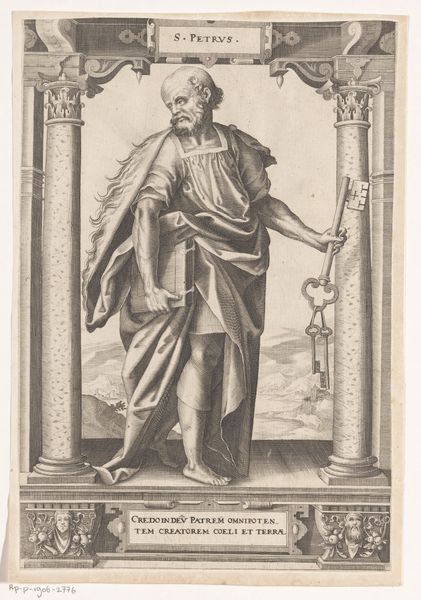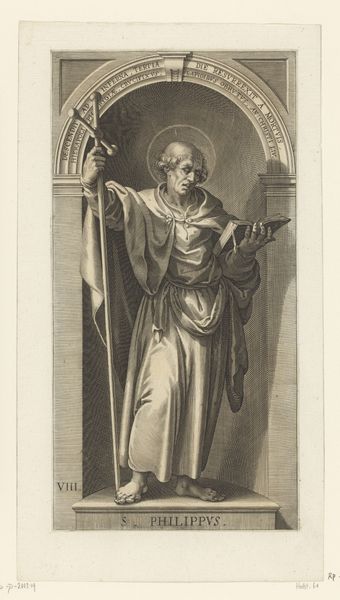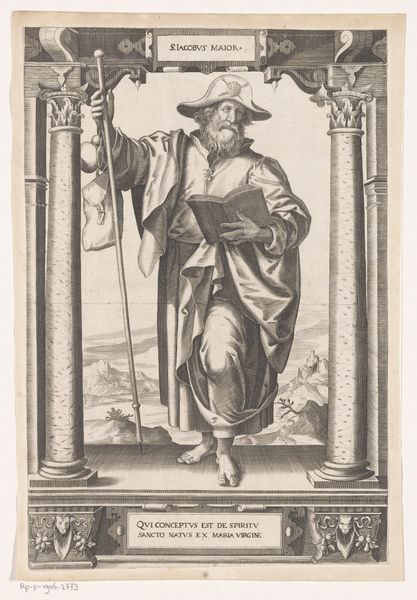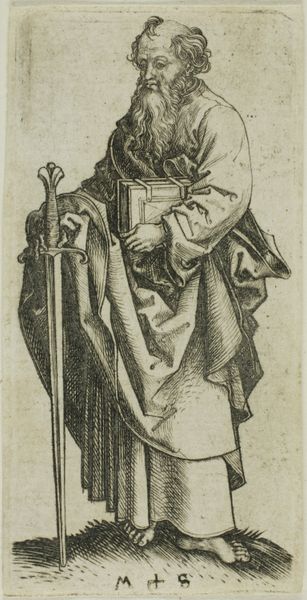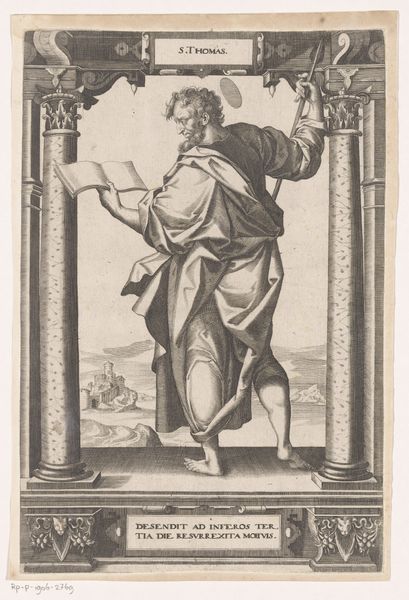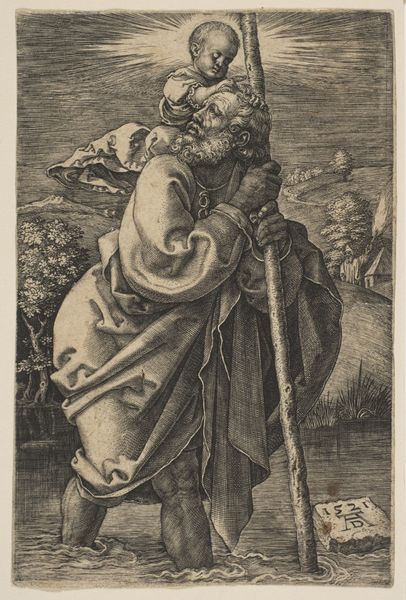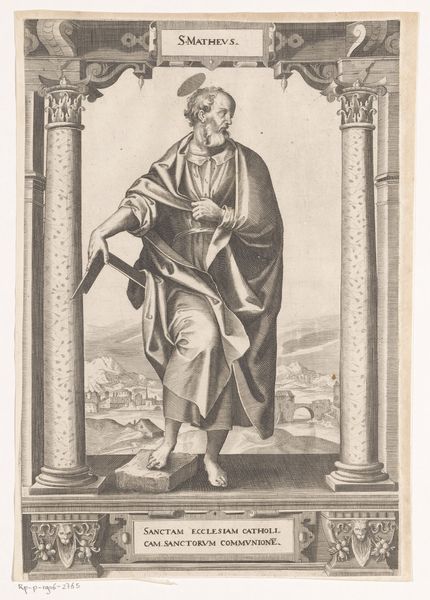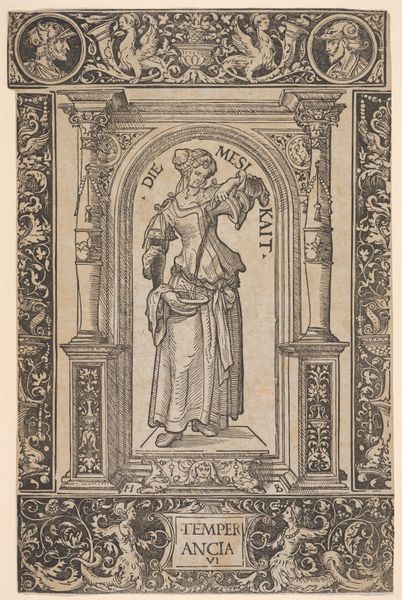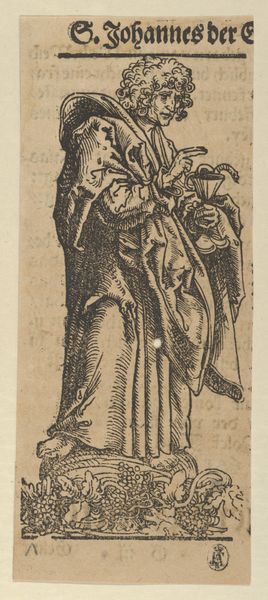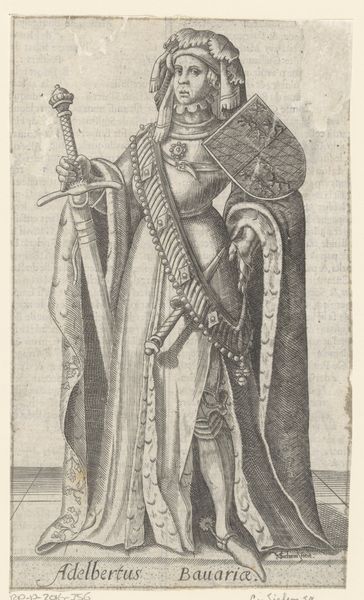
print, engraving
#
portrait
#
baroque
# print
#
caricature
#
figuration
#
history-painting
#
engraving
Dimensions: height 313 mm, width 216 mm
Copyright: Rijks Museum: Open Domain
This print of Saint Paul, Apostle to the Gentiles, was made by Dietrich Krüger around the turn of the 17th century. It’s rendered in a technique called engraving, a skilled process that involves using a tool called a burin to carve lines directly into a metal plate, usually copper. Look closely, and you’ll see how the density of these lines creates areas of shading, defining the folds of St. Paul’s robe and the texture of his beard. A print like this was a commercial product, requiring expert hand skills and significant time to produce, which speaks to the growing economy around image-making at this time. The matrix of hatched lines is evidence of the labor and skill involved. These prints were not only aesthetic objects but also powerful tools for spreading ideas in the Reformation era. Appreciating the artistry and technical skill that went into them helps us understand their cultural importance, moving beyond traditional boundaries of art and craft.
Comments
No comments
Be the first to comment and join the conversation on the ultimate creative platform.
